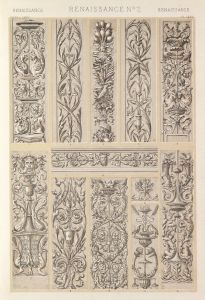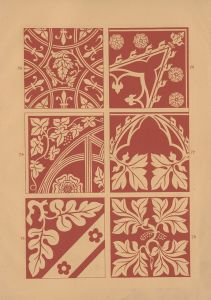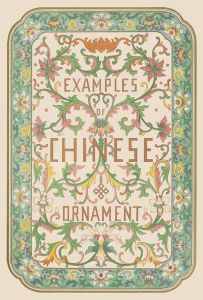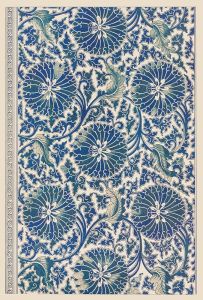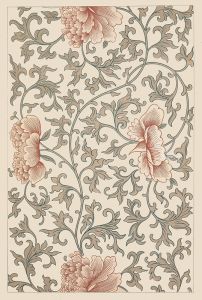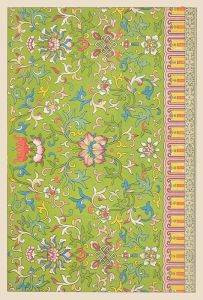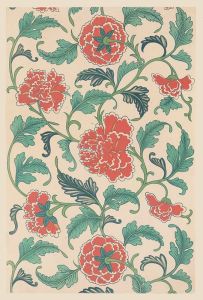
Examples of Chinese ornament, Pl.09
A hand-painted replica of Owen Jones’s masterpiece Examples of Chinese ornament, Pl.09, meticulously crafted by professional artists to capture the true essence of the original. Each piece is created with museum-quality canvas and rare mineral pigments, carefully painted by experienced artists with delicate brushstrokes and rich, layered colors to perfectly recreate the texture of the original artwork. Unlike machine-printed reproductions, this hand-painted version brings the painting to life, infused with the artist’s emotions and skill in every stroke. Whether for personal collection or home decoration, it instantly elevates the artistic atmosphere of any space.
"Examples of Chinese Ornament, Pl.09" is a decorative design plate created by Owen Jones, a prominent 19th-century British architect and designer. This plate is part of his influential work The Grammar of Ornament, first published in 1856. The book is a comprehensive collection of ornamental designs from various cultures and time periods, intended to serve as a reference and inspiration for artists, designers, and architects.
Owen Jones was deeply interested in the study of decorative arts and sought to document and analyze patterns and motifs from around the world. His work emphasized the importance of understanding the principles of design and color harmony. The Grammar of Ornament contains 100 color plates, each showcasing ornamental designs from different cultures, including Egyptian, Greek, Roman, Indian, Persian, and Chinese traditions.
Plate 09 specifically focuses on Chinese ornamentation. It features a variety of intricate patterns and motifs that reflect traditional Chinese artistic principles. The designs are characterized by their symmetry, balance, and use of vibrant colors, including red, gold, and blue. Common motifs in Chinese ornamentation, such as floral patterns, geometric shapes, and symbolic imagery, are represented in this plate. These elements are rooted in Chinese cultural and artistic traditions, often carrying symbolic meanings related to prosperity, harmony, and nature.
The designs in Plate 09 were likely inspired by historical Chinese decorative arts, including textiles, ceramics, and architectural elements. Jones's depiction of these ornaments was based on his study of Chinese artifacts and his interpretation of their aesthetic principles. The plate serves as an example of how 19th-century European designers sought to incorporate and adapt non-Western artistic traditions into their own work.
Owen Jones's The Grammar of Ornament was groundbreaking for its time, as it introduced a systematic approach to the study of design and celebrated the diversity of global artistic traditions. The book remains an important resource for understanding historical ornamentation and continues to influence designers and scholars today. Plate 09, as part of this collection, highlights the richness and sophistication of Chinese decorative art within a broader context of cross-cultural appreciation and study.





